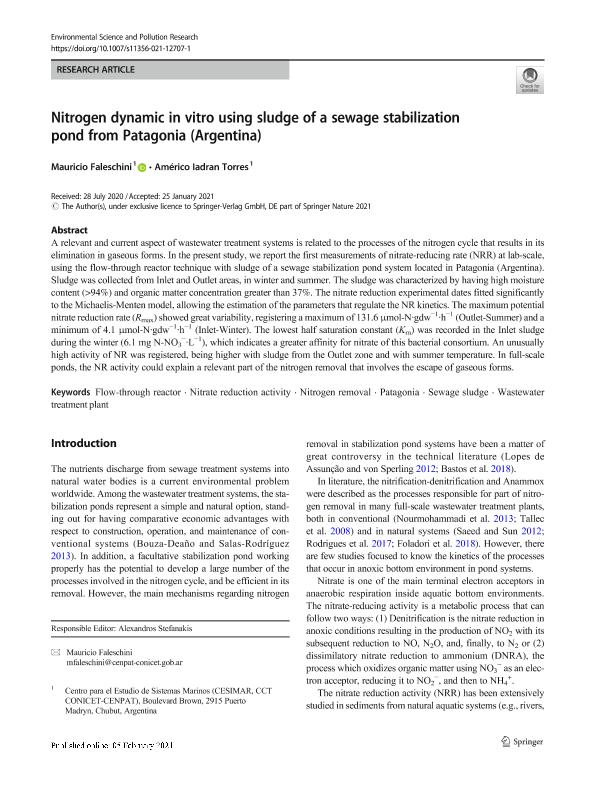Artículo
Nitrogen dynamic in vitro using sludge of a sewage stabilization pond from Patagonia (Argentina)
Fecha de publicación:
02/2021
Editorial:
Springer Heidelberg
Revista:
Environmental Science and Pollution Research
ISSN:
0944-1344
Idioma:
Inglés
Tipo de recurso:
Artículo publicado
Clasificación temática:
Resumen
A relevant and current aspect of wastewater treatment systems is related to the processes of the nitrogen cycle that results in its elimination in gaseous forms. In the present study, we report the first measurements of nitrate-reducing rate (NRR) at lab-scale, using the flow-through reactor technique with sludge of a sewage stabilization pond system located in Patagonia (Argentina). Sludge was collected from Inlet and Outlet areas, in winter and summer. The sludge was characterized by having high moisture content (>94%) and organic matter concentration greater than 37%. The nitrate reduction experimental dates fitted significantly to the Michaelis-Menten model, allowing the estimation of the parameters that regulate the NR kinetics. The maximum potential nitrate reduction rate (Rmax) showed great variability, registering a maximum of 131.6 μmol-N·gdw−1 ·h−1 (Outlet-Summer) and a minimum of 4.1 μmol-N·gdw−1 ·h−1 (Inlet-Winter). The lowest half saturation constant (Km) was recorded in the Inlet sludge during the winter (6.1 mg N-NO3 − ·L−1 ), which indicates a greater affinity for nitrate of this bacterial consortium. An unusually high activity of NR was registered, being higher with sludge from the Outlet zone and with summer temperature. In full-scale ponds, the NR activity could explain a relevant part of the nitrogen removal that involves the escape of gaseous forms.
Archivos asociados
Licencia
Identificadores
Colecciones
Articulos(CESIMAR)
Articulos de CENTRO PARA EL ESTUDIO DE SISTEMAS MARINOS
Articulos de CENTRO PARA EL ESTUDIO DE SISTEMAS MARINOS
Citación
Faleschini, Mauricio; Torres, Américo Iadran; Nitrogen dynamic in vitro using sludge of a sewage stabilization pond from Patagonia (Argentina); Springer Heidelberg; Environmental Science and Pollution Research; 28; 22; 2-2021; 28692-28703
Compartir
Altmétricas




